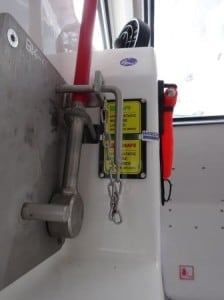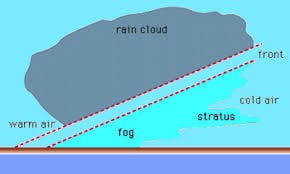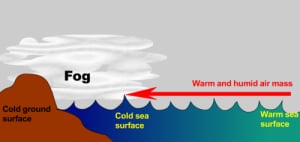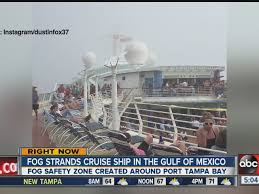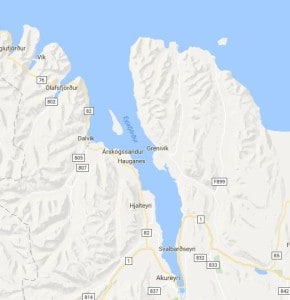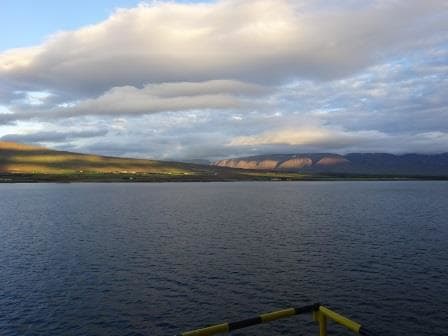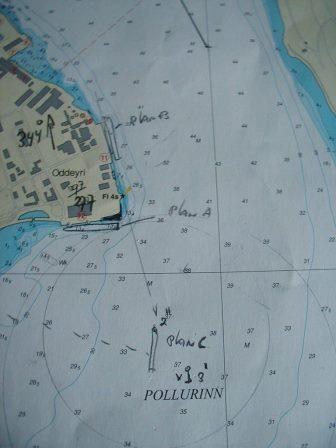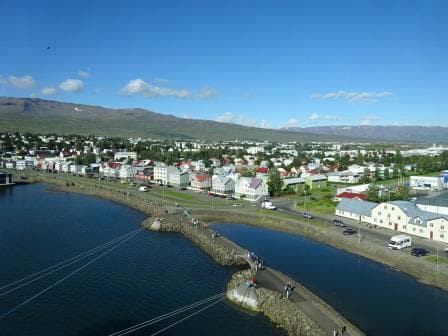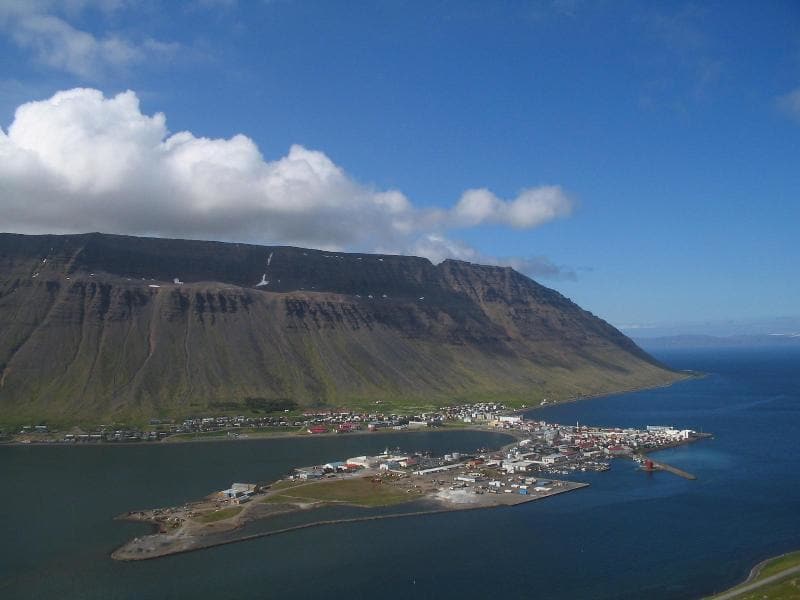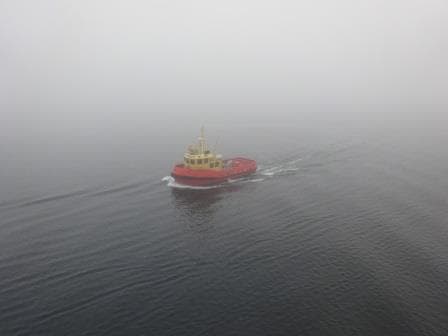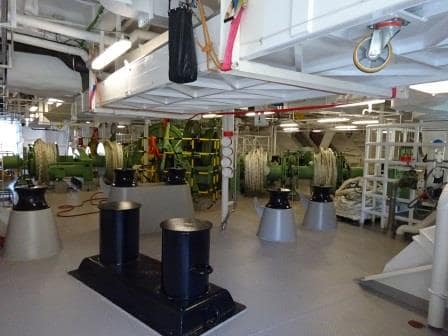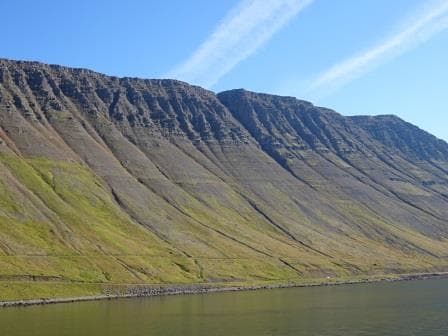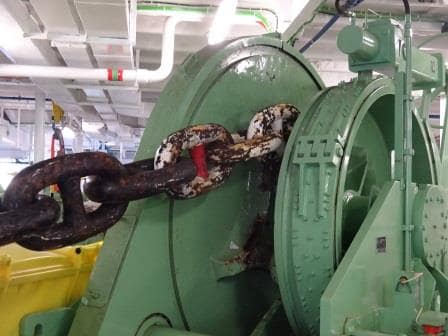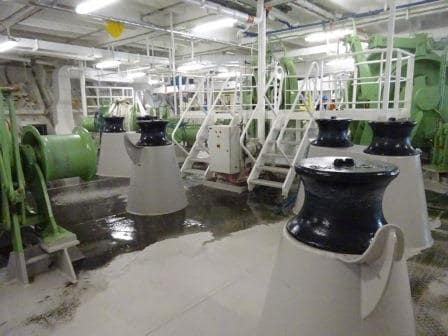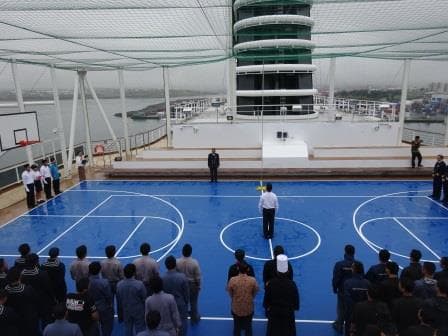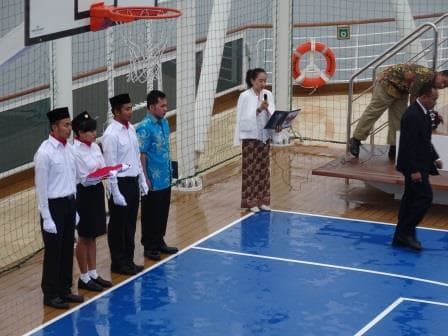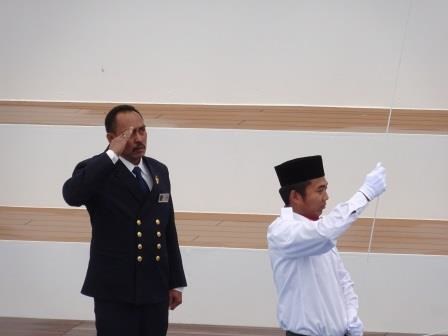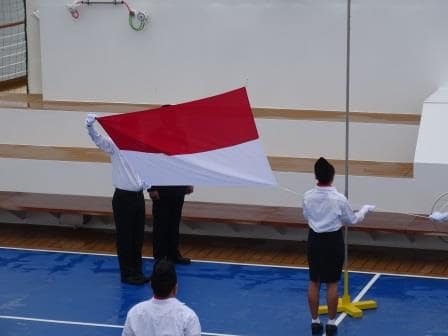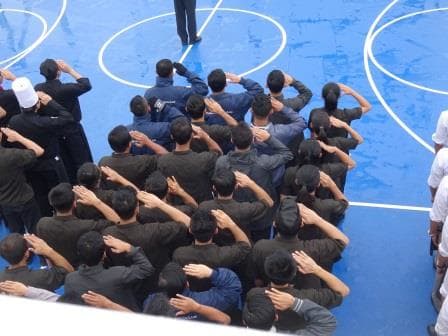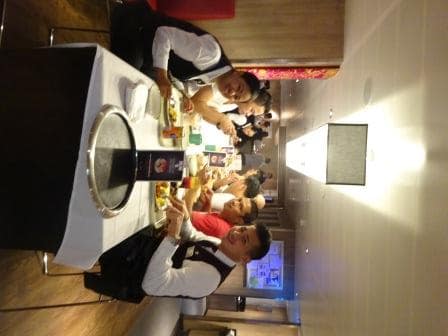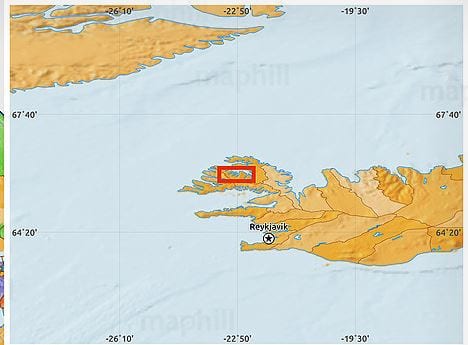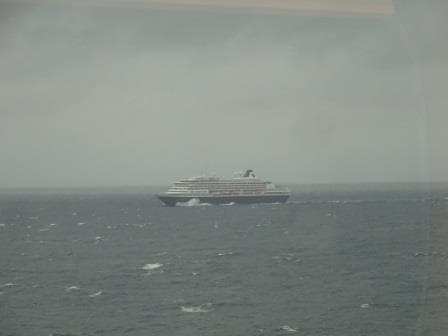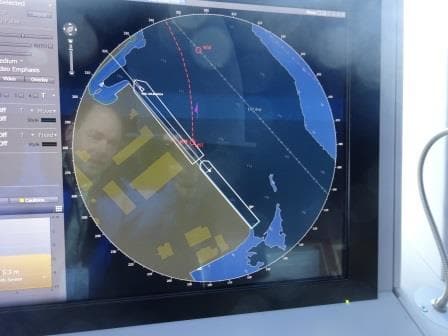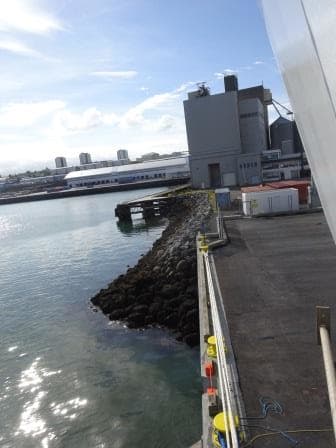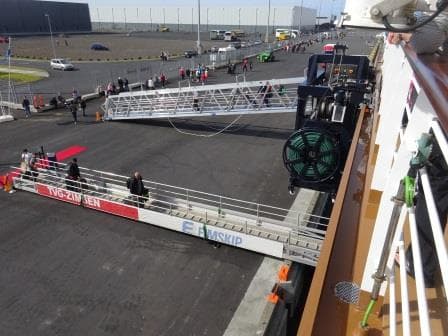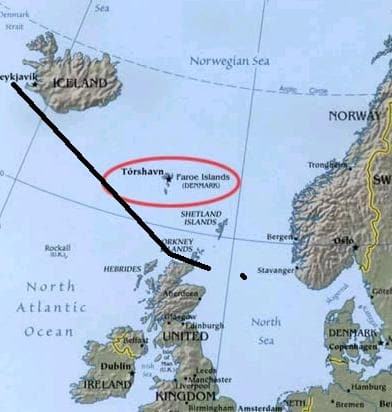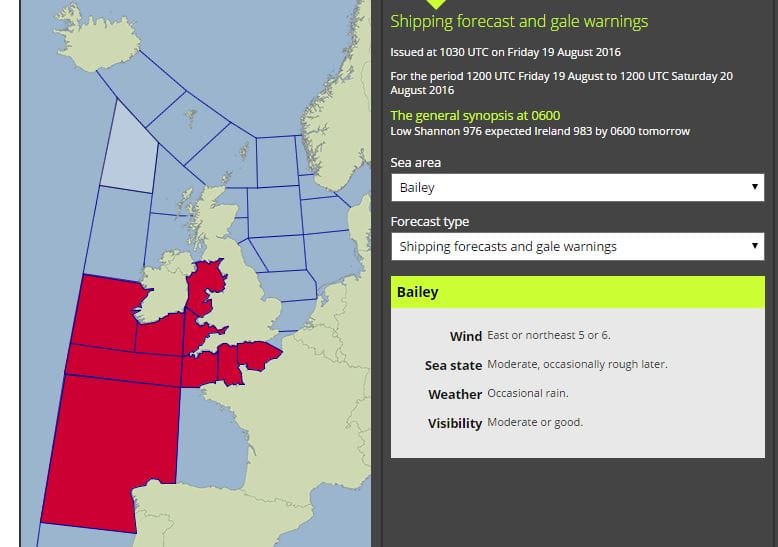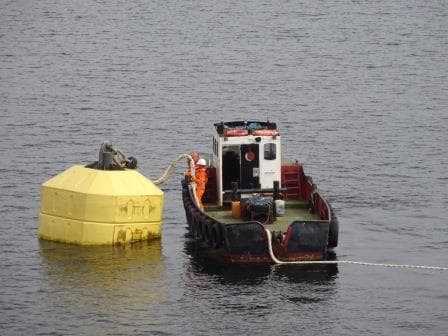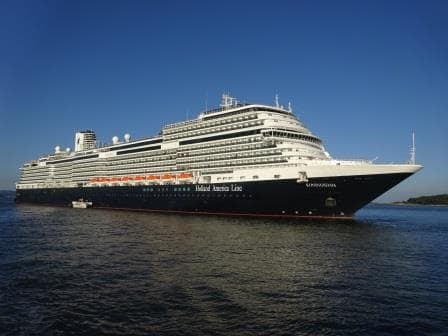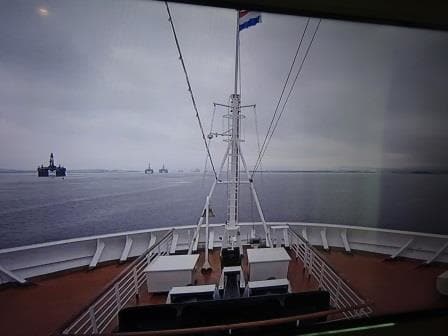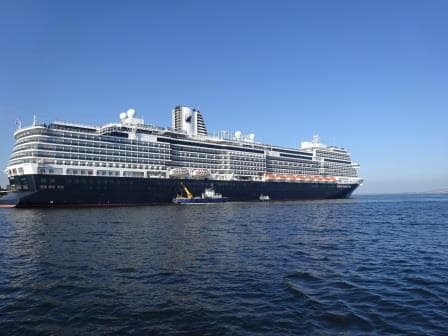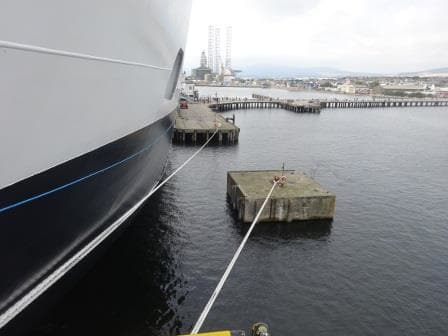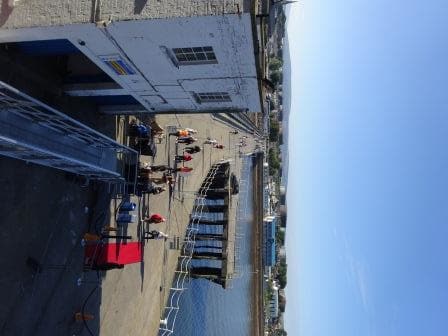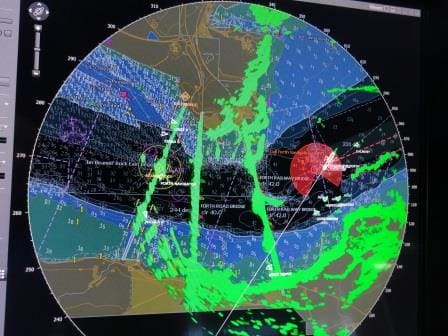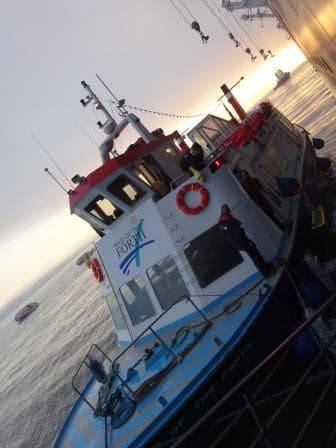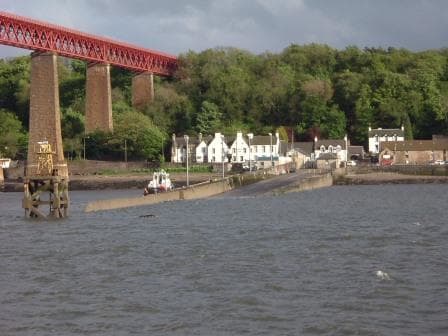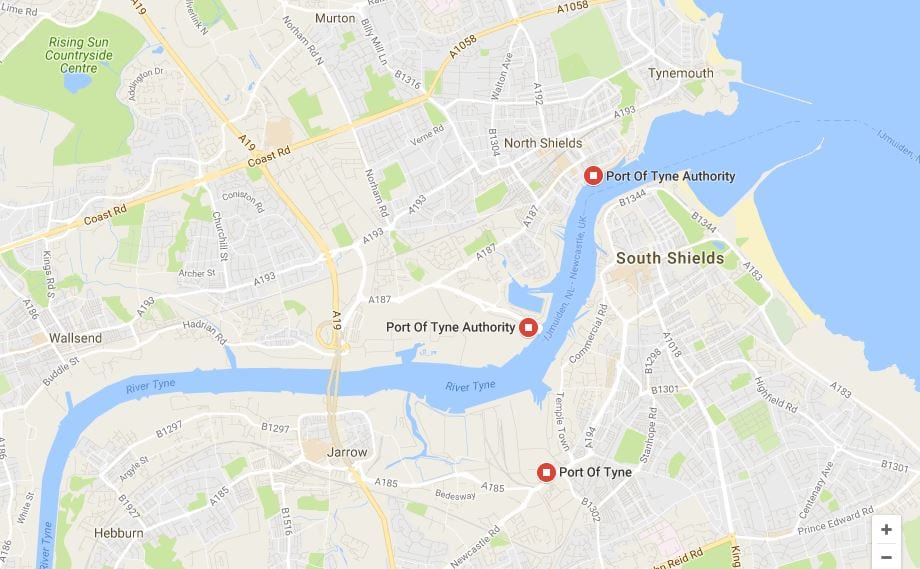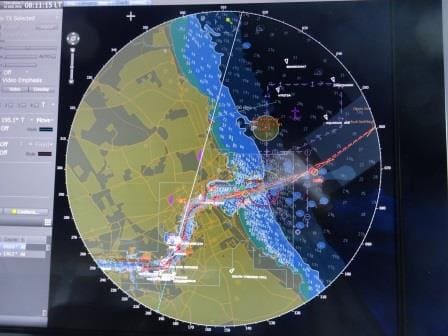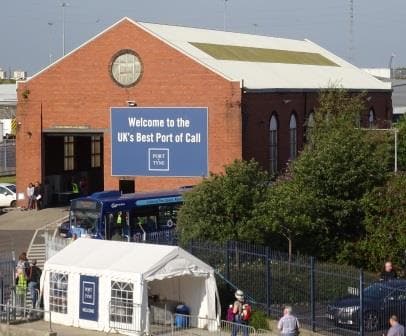We were lucky people during last night and today as the Restricted Visibility did not return. The wind shifted slightly and that was enough to change the temperature balance between water and air. And coming closer and closer to the Norwegian coast also helped with the sea water temperature as the water is not so cold here than when in the open sea. So reason enough for everybody to be happy. This morning we also passed the Queen Mary II which was on her way to Flam in Norway, where the Koningsdam will call next cruise. Normally the Queen Mary II should pass us as she is capable of a higher speed but we were going at a fast clip while she was leisurely cruising along. Courtesy of a different cruise schedule.
Today I caused considerable stress among the sailors as it was Theoretical Exam day for the aspiring Tender Drivers which I have been helping along in between other things. To become a proficient tender driver with Holland America Line a sailor has to do a considerable amount of work. First he has to be a Sailor AB. (= Able Bodied) which means he (we do not have female sailors yet) has to have enough experience to do all the work on board which the Bo ‘sun assigns. Then he has to follow the class which is given by a senior officer on board or in this case by me because I just happened to be here. That class has 6 or 7 hours of theoretical lessons, covering the construction and inventory of the Tender (as it is a lifeboat) Rules of the Road, Emergencies on board, use of all instruments and a Basic understanding of the engines.
Then there are two courses to follow on our computer system. We call this system HAL- University and it has all the training courses listed which any crew member might need to properly and safely do a job. Those two courses are Tender Driving where with animations several scenarios are played out and questions need to be answered and a special course about the Release Gear of the lifeboat.
Everybody who has been in a tender to go ashore will have seen close to the driver’s position a long handle in orange, red or yellow. When this handle is pushed down, it releases the fall wires in which the lifeboat/tender hangs when it is out of the water.
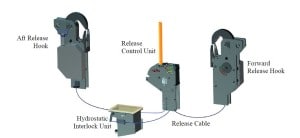
Schematic of how it works. The water pushes the plunger up and that releases the safety catch on the handle. (Diagram courtesy of Rock Lok who supplies the system)
This releasing is only possible if the boat is in the water. In the bottom of the boat is a small hole which lets water into a compartment in which rests a plunger. When the boat is in the water, the sea water comes in, pushes up the plunger and this releases a safety catch. With the catch gone it is possible to pull the handle and this opens the hooks to let those fall wires slip away. The principle is very simple but you have to understand the logic behind it and for that we have a special course.The whole evolution of safely getting away from a sinking ship depends on using this handle properly, so it is a very critical part of the lifeboat/tender.
Then there are a number of practical lessons. We exercise the regular maneuvering with the tender for docking and undocking, running on one engine, using wind and current to your advantage and emergency steering when the regular steering wheel does not work anymore. Once that is all completed the Theoretical Exam is held. In 25 questions everything is covered —— well at the least the most pertinent points———— and 80% has to be scored to pass. Often the answers are not the issue for the sailor; they normally know their stuff very well. What spooks them the most is reading the questions properly as their English is often quite basic. Good enough to work safely, not always good enough to understand the Queen’s English. Today the stumbling block was the word choking. Which requires the answer: I will use the Heimlich maneuver. They all knew what to do but the word puzzled them. But all 10 passed without difficulty.
We arrived nicely on schedule in Aalesund and docked at the Cruise terminal. We are the only ship to enjoy the town today. It is a bit gloomy but it is dry. T
At 20.00 hrs. we will sail for Bergen where we should be docked by 08.00 hrs. Seeing the same overcast weather.
